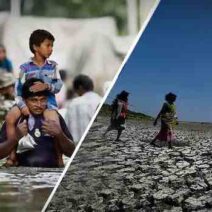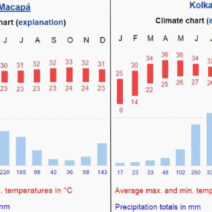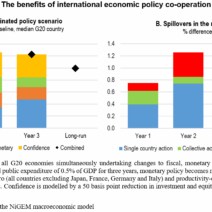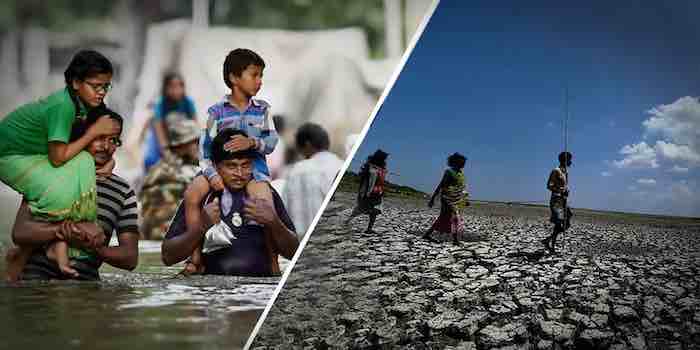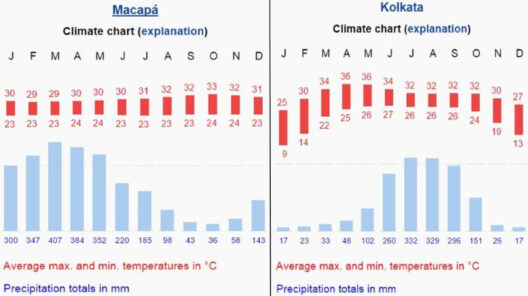Global warming has metamorphosed into an existential threat, fundamentally altering climatic regimes across the planet. As temperatures escalate due to anthropogenic activities, a paradox emerges: the simultaneous occurrence of floods and droughts. This duality exemplifies the capricious nature of climate systems. While the two phenomena seem oppositional, they are intricately interconnected through the milieu of climate change.
At the core of this conundrum lies the fundamental principle of moisture dynamics in the atmosphere. Warmer air possesses an increased capacity to retain water vapor, leading to altered precipitation patterns. This can manifest as torrential downpours in certain regions, while simultaneously precipitating arid conditions in adjacent areas. The intensification of the water cycle creates a pendulum effect; regions once blessed with bounteous rainfall may encounter parched landscapes, while historically dry zones face the calamity of deluge.
The increasing intensity of storms is one striking manifestation of this phenomenon. As the climate warms, ocean temperatures also rise, which can amplify the energy of tropical cyclones and hurricanes. These storms are capable of releasing copious amounts of rainfall in a short period, overwhelming infrastructure and ecosystems alike. For instance, events like Hurricane Harvey in 2017 evidenced how climate change can exacerbate flooding, with unprecedented deluges inundating cities and displacing thousands.
Conversely, there is the creeping advent of drought that afflicts vast swathes of the globe. Prolonged periods of extreme heat, coupled with diminished precipitation rates, undermine moisture availability in the soil. This scenario is particularly insidious, as droughts develop gradually, often catching societies off guard. The slow onset can lead to catastrophic agricultural impacts, straining food systems and exacerbating hunger. Farmers face a desperate struggle to adapt, often relying on dwindling water resources that are increasingly insufficient.
Regions such as the American Southwest epitomize the dichotomy of flooding and drought. The region, characterized by its arid climate, has recorded significant drought conditions in recent years. However, when rainfall does occur, it often takes the form of intense thunderstorms that catapult localized flooding. The resultant soil erosion and damaged infrastructure highlight a pressing need for comprehensive water management strategies that account for these countervailing forces.
Furthermore, the interplay of urban development exacerbates the adverse effects of floods and droughts. Cities, with their impervious surfaces, increase runoff during heavy precipitation, which can lead to rapid flooding. In contrast, these same urban environments can experience acute water scarcity during dry spells, as natural recharge of groundwater aquifers is hindered by concrete landscapes. Sustainable urban planning must integrate green infrastructure solutions—such as permeable pavements and rain gardens—to effectively mitigate both flooding and drought risks.
The interconnectedness of floods and droughts invites scrutiny of societal responses to climate impacts. In many instances, communities are unprepared for the double-edged sword of climate variability. Emergency management frameworks often focus on either flood preparedness or drought response, failing to address the full spectrum of climate-induced challenges. This siloed approach limits resilience. A holistic strategy that recognizes the dynamic interplay of climatic extremes is imperative for effective risk mitigation.
Moreover, the human toll of this dual threat is staggering. Vulnerable populations, often marginalized, bear the brunt of climate disruption. Inequities in resource allocation exacerbate the challenges posed by floods and droughts. Disadvantaged groups, lacking access to adequate infrastructure or emergency resources, face heightened risks during climatic upheavals. Thus, climate change serves as a magnifying lens, exposing and exacerbating preexisting social injustices.
Education and awareness are paramount in addressing the double threat posed by global warming. Public understanding of the intricacies of the water cycle, alongside the ramifications of climate change, can drive proactive engagement. Communities must foster dialogues about climate resilience, encouraging innovative solutions grounded in local knowledge. These discussions should encompass land-use planning, conservation practices, and water management strategies that account for the uncertainties associated with a warming climate.
Mitigation of global warming itself is an essential endeavor. Transitioning to renewable energy sources—such as solar, wind, and hydroelectric power—can significantly reduce greenhouse gas emissions, addressing the root cause of climate change. Implementing policies that foster energy efficiency and promote sustainable practices in agriculture and land use can also mitigate the adverse effects of both floods and droughts. The adoption of regenerative agricultural practices, for example, can enhance soil health and improve water retention, making landscapes more resilient to climate extremes.
In conclusion, global warming orchestrates a theatrical performance of climatic extremes, where both floods and droughts emerge as players on the same stage. This dual threat necessitates a profound reevaluation of current strategies, compelling leaders, communities, and individuals to adopt a multifaceted approach to climate resilience. As humanity stands at the precipice of an uncertain future, we must harness our collective capacity for innovation and adaptation to weather the storms of change, ensuring that neither floods nor droughts undermine our shared future.
